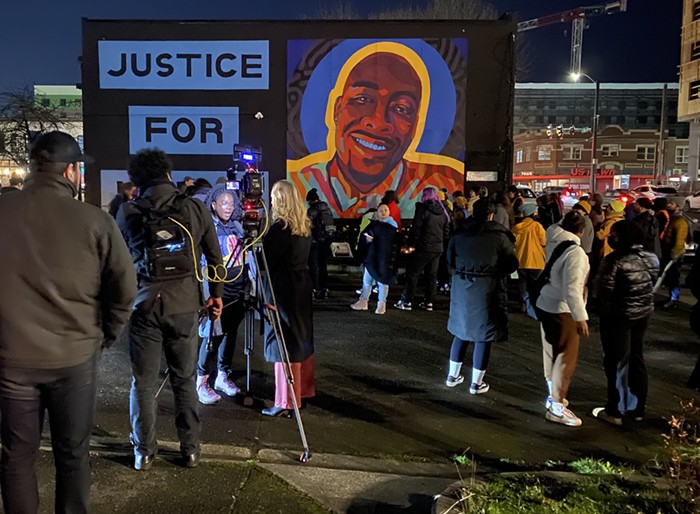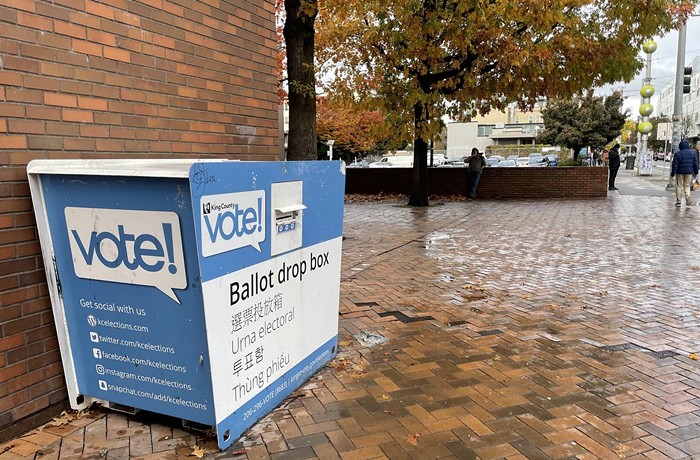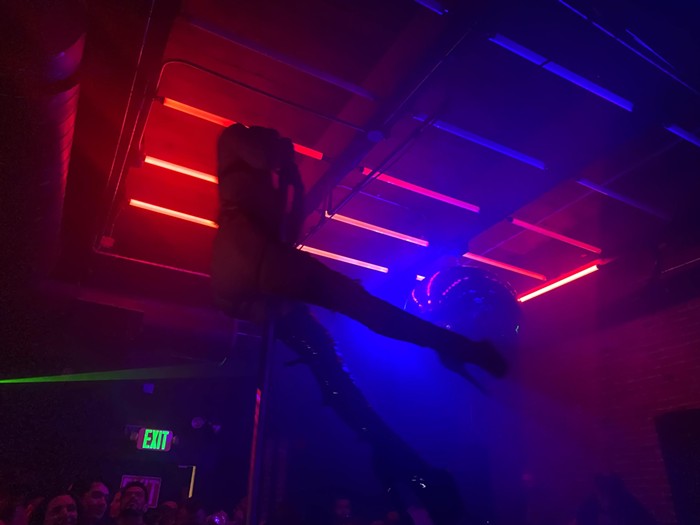The western red cedar next to Roosevelt High School was nameless until a property owner announced plans to build apartments in its place. But Tom Walton, 59, who has rented a house in its shade for 22 years, wanted to protect the 90-foot-tall evergreen. So Walton and a posse of half a dozen neighbors filed an appeal with the city in January, sending plans for the apartment building back to the drawing board. "This is a chance to save a real landmark," says Walton. "I like it for aesthetic reasons, and other people like it for sustainability reasons." He even christened it: Big Red.
The tree qualifies for special protection because the city designated it a heritage tree—which, according to city rules, is distinguished by "exceptional size, form, or rarity." The trunk measures nearly 50 inches in diameter, making it "exceptional" under city law. But a city arborist hired by the developer notes that Big Red is actually several little reds: Its large trunk is the product of several trees that have grafted together, not one magnificent tree. Nor is Big Red especially beautiful: An enormous piece of the tree has been removed to avoid several power lines, and the arborist notes that portions of the bark have been sanded away.
Saving the 75-year-old conifer wouldn't advance neighbors' sustainability goals either. The site is across the street from the future Roosevelt light-rail station, which will open by 2020, making it an ideal location for housing. Housing at transit stops—known as "transit-oriented development"—reduces traffic, cuts carbon emissions, and helps combat suburban sprawl, thus saving trees. But if Walton and others succeed in saving Big Red, the developer says, they will kill the project.
"It just wouldn't happen," says Jerry Jandacka, a partner in Brooklyn Court, LLC. "It takes too much land and it costs too much." City rules would require the building to maintain a 49-foot perimeter clearance around the tree to provide sufficient water, light, and drainage. The architect for the project, Bill Walker, notes that building around the tree would mean eliminating as many as 19 of the proposed building's 58 units. A building that small, he says, would no longer pencil out. Jandacka adds that, according to the arborist he hired, the tree could be threatened by the tumult of construction. "If it does die, we're stuck with a building with a hole in it."
Walton argues that Jandacka and his wife are simply trying to maximize their profits. He points to half a dozen houses—all, he says, in mediocre condition—the couple rents in the Roosevelt neighborhood. "They are so lax on the type of tenants they bring in," he says.
Walton knows what type of tenants the Jandackas bring in: He is one of them.
"For so many years, [Walton] thanked us for keeping his rent down, because otherwise he wouldn't be able to keep renting in the city," says Jandacka. "And this is what we get for it."
The city's design-review board, which determined the tree was worth saving in early May, will consider Big Red's future at a final meeting on July 6. "No one is cheering the demise of the tree," says Jim O'Halloran, land-use chair of the Roosevelt Neighborhood Association. "I don't think that the tree advocates have capably measured all the factors, including the community interest in redeveloping the site." ![]()


















